Discover the key properties of this unique 4-sided shape.

Author
Taylor Hartley

Expert Reviewer
Jill Padfield
Published: August 24, 2023


Discover the key properties of this unique 4-sided shape.

Author
Taylor Hartley

Expert Reviewer
Jill Padfield
Published: August 24, 2023




Discover the key properties of this unique 4-sided shape.

Author
Taylor Hartley

Expert Reviewer
Jill Padfield
Published: August 24, 2023


Key takeaways
The word rhombus might sound a bit fancy, but it simply describes a four-sided shape, like a diamond, that shares many of the same properties as a square. A diamond-shaped kite is a popular example of a rhombus if it has four equal sides; you may have also seen this shape in certain building designs and floor tiles.
So, what is a rhombus? How can we measure its perimeter or area? Let’s take a look.
The term “rhombus” is derived from the Greek word “rhombos,” which means something that spins.
The definition of a rhombus is a four-sided shape, also known as a quadrilateral, with congruent sides. This means that all sides must be the same length.
All rhombuses are quadrilaterals, but not all quadrilaterals are rhombuses. A quadrilateral is a shape with four sides. For example, a rectangle is a quadrilateral because it has four sides. However, in rectangles, two of the sides are shorter than the others, so while both a rectangle and a rhombus are quadrilaterals, a rectangle is not a rhombus.
Now, you might be thinking “So, are a rhombus and a square the same?”
Squares can be classified as rhombuses because they have four sides of equal length. However, a square must also have four equal angles of 90 degrees, which are known as right angles. A rhombus only needs to have its opposite interior angles equal to each other, as illustrated below.
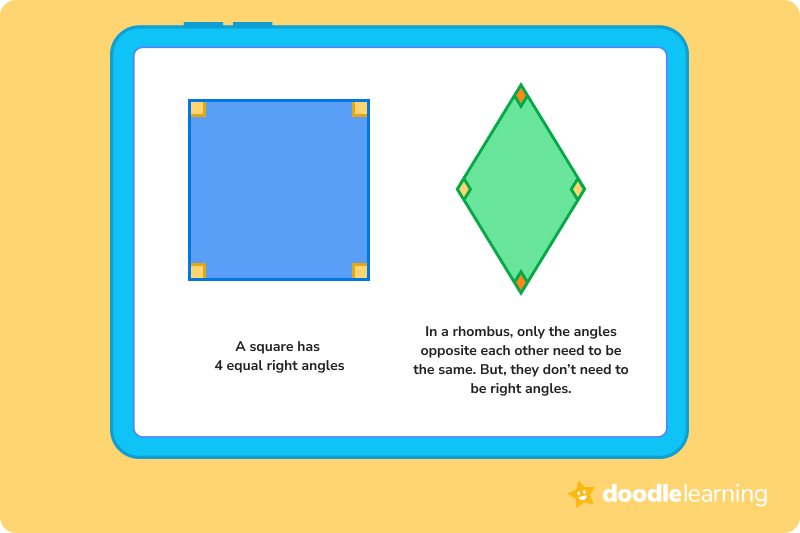
So, all squares are rhombuses, but not all rhombuses are squares!
A rhombus is a fairly rare shape in the natural world. However, it can be found in many man-made items. Have you ever played a game of cards? Rhombuses are used to symbolize the suit of diamonds. Some kites are in the rhombus shape too.
Rhombuses are also a popular choice for floor tiles, road signs, Christmas tree decorations, and building designs.

A rhombus is a quadrilateral with unique features that sets it apart from other quadrilaterals, such as a rectangle or a trapezoid.
For a shape to be classified as a rhombus it must:
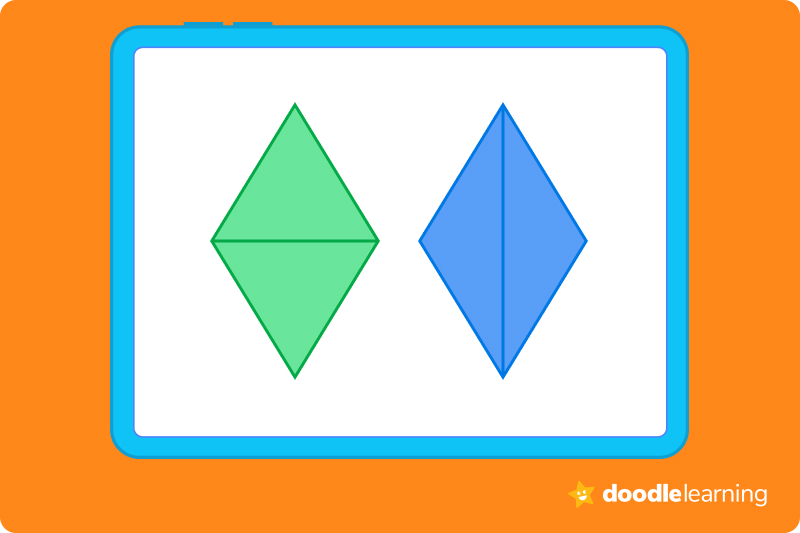
The area of a rhombus is described as the amount of space inside the two-dimensional shape. This is usually measured in units squared, for example, in centimeters squared (cm2) or meters squared (m2). Fortunately, because a rhombus has all sides of equal length, finding the area is more straightforward than with other shapes.
We can calculate the area of a rhombus shape in two ways:
Let’s go through the steps of each of these calculations.
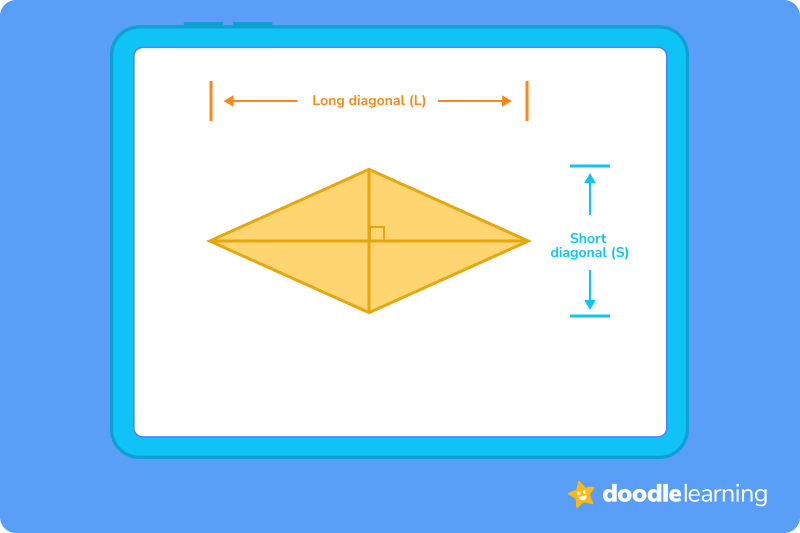
8 x 6 = 48
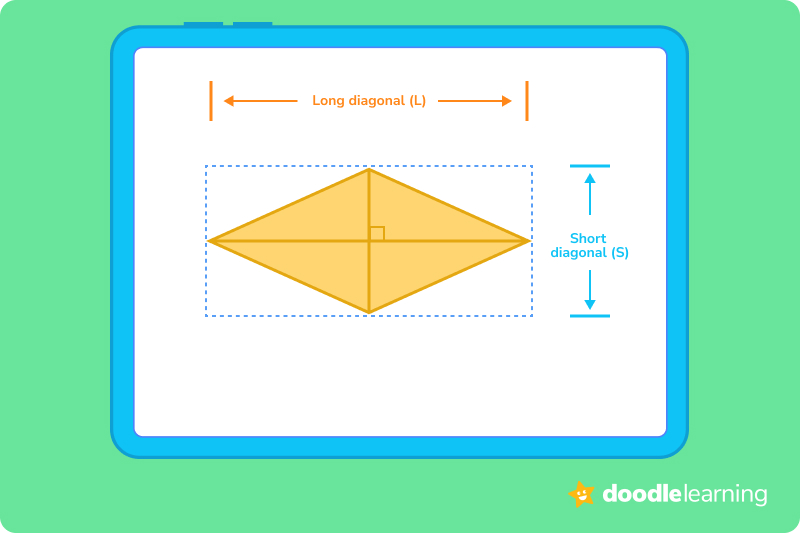
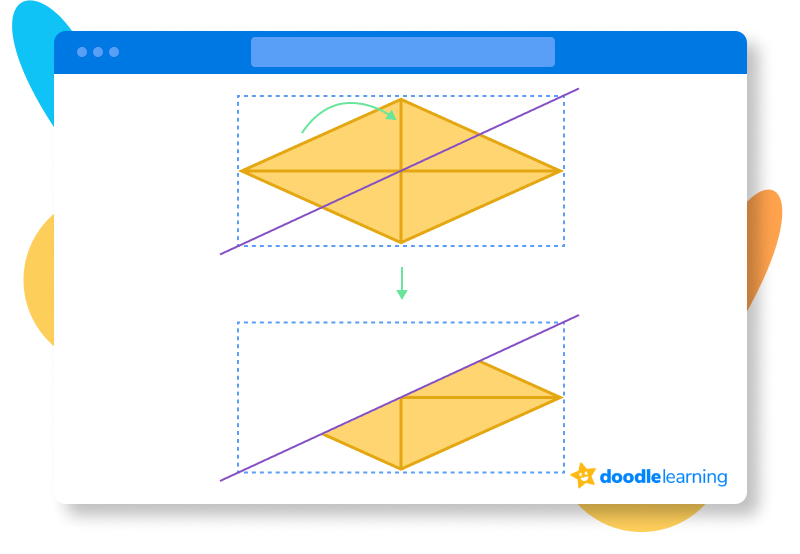
So, we divide the original answer by 2:
48 ÷ 2 = 24
The area of the rhombus is 24 cm2.
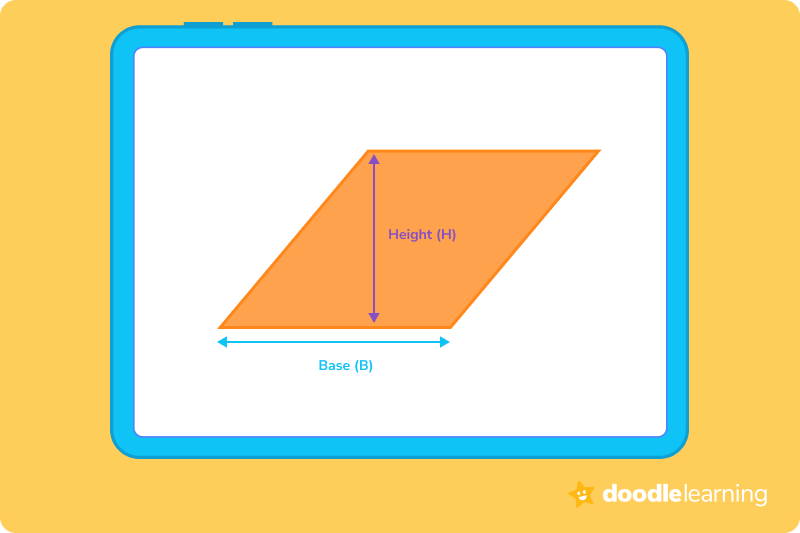
5 x 7 = 35
The perimeter of a rhombus is the total length of its boundaries. Basically, it’s the sum of all the side lengths. We know that all four sides of a rhombus are of equal length, which makes this a fairly straightforward calculation.
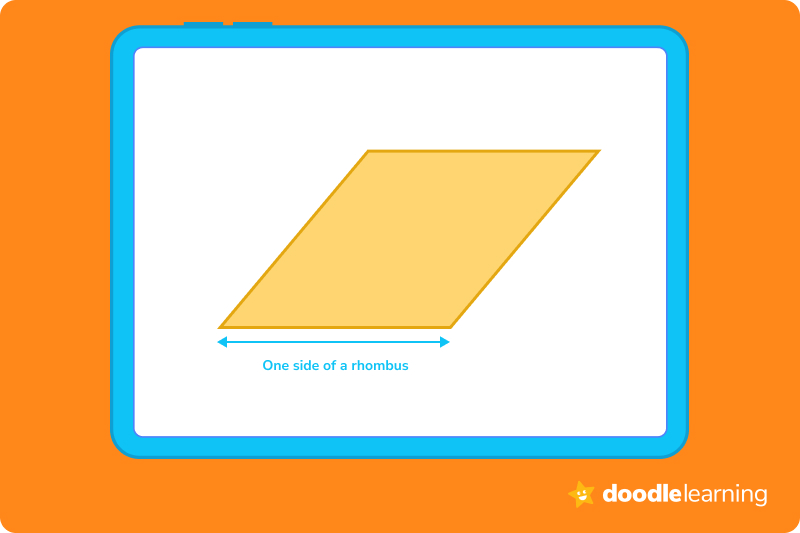
4 x 4 = 16
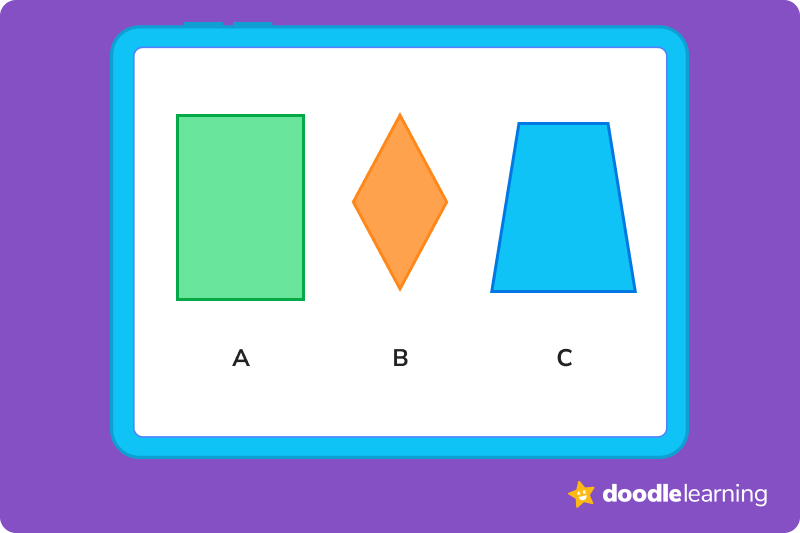
The correct answer is B because this is the only shape with 4 sides of equal length.
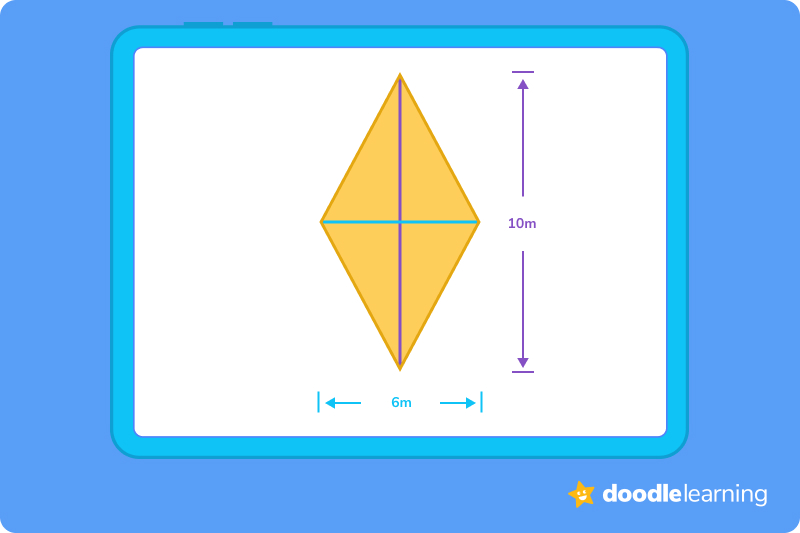
In this problem, we know the long and the short diagonal measurements of the rhombus. So, first, we need to multiply these two numbers together:
6 x 10 = 60
Now, because we are using diagonal measurements, we need to divide the answer by 2:
60 ÷ 2 = 30
Therefore, our answer is 30 m2.
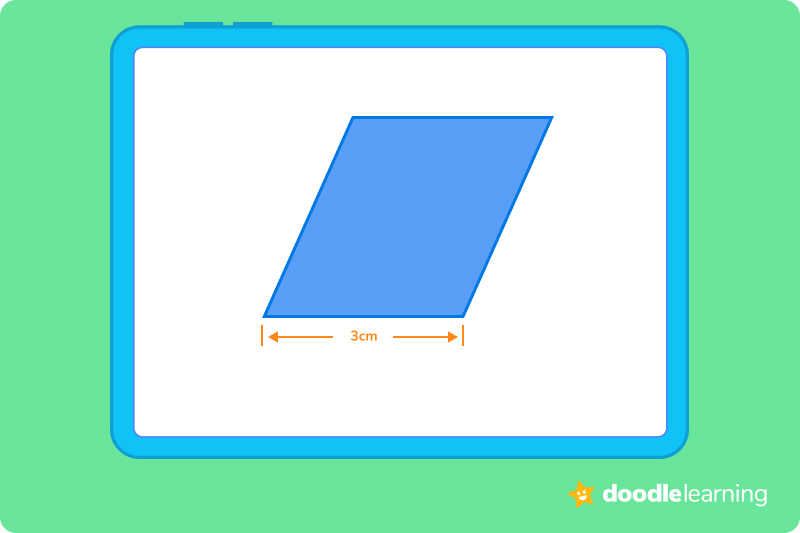
All four sides of a rhombus are the same length. So, if we know that one side is 3 cm, we just need to multiply this number by 4:
4 x 3 = 12
So, the correct answer is 12 cm.
Ready to give it a go?
Now it’s time to put your knowledge to the test! Work through the following problems on your own, and see how you do. Don’t feel disheartened if you struggle with any of the questions. Remember, practice makes perfect!
Feel free to look back through this guide to refresh your memory whenever you need to.
Click to reveal the answer.
The answer is 36 cm.
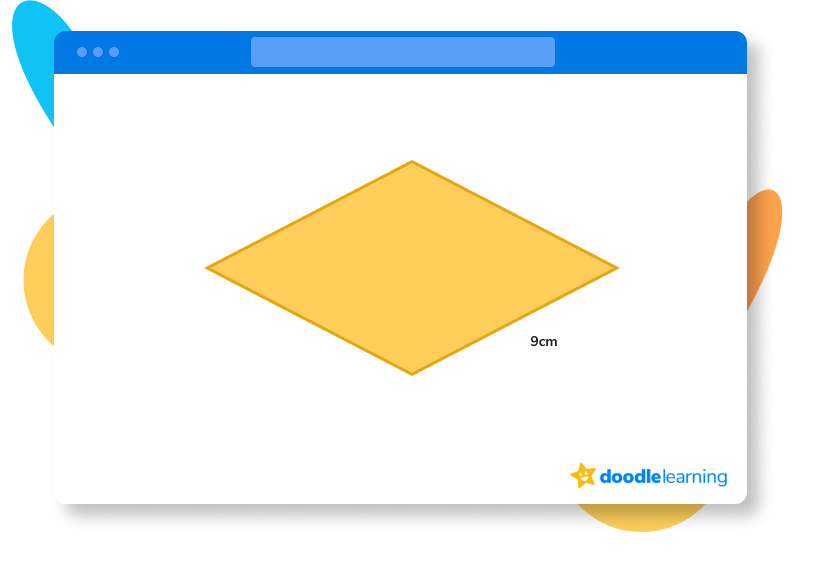
The answer is FALSE.
The answer is C.
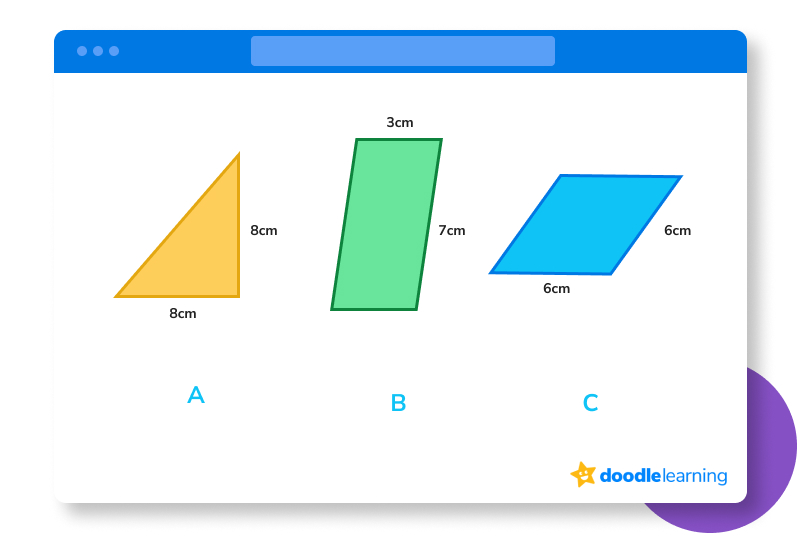
The answer is 60 cm2.

The answer is 48 cm2
How did we get here?
We have the base measurement and the height measurement of the rhombus in this example. So, all we need to do is multiply base times height:
8 x 6 = 48
This makes the answer 48 cm2
The answer is 36 cm
How did we get here?
A rhombus has 4 sides of equal length. So, if we know that one side is 9 cm, we just need to multiply this number by 4:
9 x 4 = 36
Therefore, the answer is 36 cm
The answer is FALSE
How did we get here?
In a rhombus, only the opposite angles must be the same. If a shape has four equal sides and 4 equal angles, then it’s a square.
The answer is C
How did we get here?
The answer is 60 cm2
How did we get here?
12 x 10 = 120
120 ÷ 2 = 60
We understand that diving into new information can sometimes be overwhelming, and questions often arise. That’s why we’ve meticulously crafted these FAQs, based on real questions from students and parents. We’ve got you covered!
Yes, a rhombus must have four sides of equal length. A rhombus must also have its opposite sides parallel and opposite angles equal.
For a shape to be a rhombus, it has to have four straight sides of equal length and the opposite angles need to be the same. The most common rhombus shape is a diamond. However, technically, a square can also be classified as a rhombus because it has four sides of equal length and the opposite angles are equal. However, it is important to note that not all rhombuses are squares because rhombuses don’t all have 90° angles.
If a rhombus is a square then it must have 4 right angles. However, for a shape to be classified as a rhombus, it only needs to have the opposite angles equal, and it is not required that they are right angles.
There are certain properties that a shape must have to be a rhombus:


Parents, sign up for a DoodleMath subscription and see your child become a math wizard!

Lesson credits

Taylor Hartley
Taylor Hartley is an author and an English teacher based in Charlotte, North Carolina. When she's not writing, you can find her on the rowing machine or lost in a good novel.

Jill Padfield
Jill Padfield has 7 years of experience teaching high school mathematics, ranging from Alegra 1 to AP Calculas. She is currently working as a Business Analyst, working to improve services for Veterans while earning a masters degree in business administration.

Taylor Hartley
Taylor Hartley is an author and an English teacher based in Charlotte, North Carolina. When she's not writing, you can find her on the rowing machine or lost in a good novel.

Jill Padfield
Jill Padfield has 7 years of experience teaching high school mathematics, ranging from Alegra 1 to AP Calculas. She is currently working as a Business Analyst, working to improve services for Veterans while earning a masters degree in business administration.
Book a chat with our team
If you’d like to use Doodle’s browser version, please visit this page on a desktop.
To log in to Doodle on this device, you can do so through our apps. You can find out how to download them here: